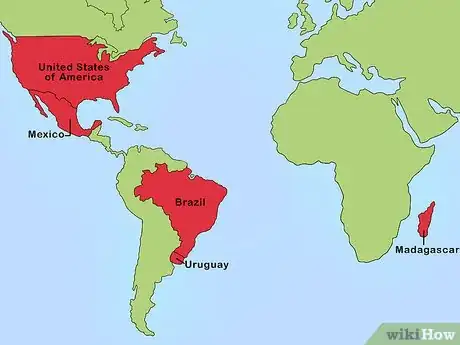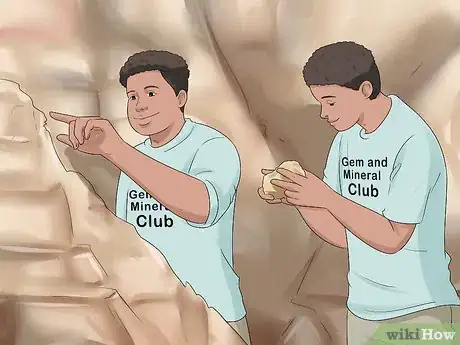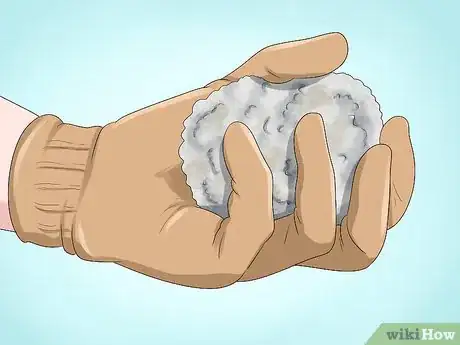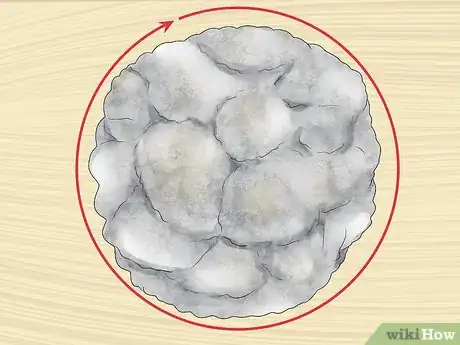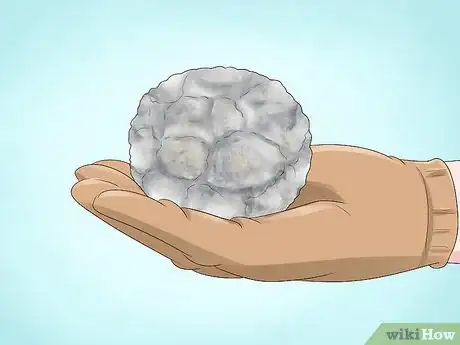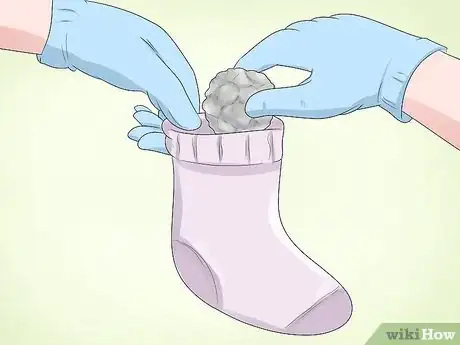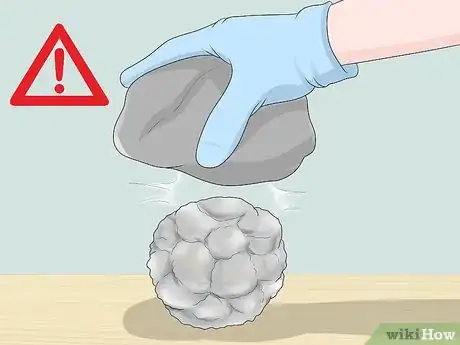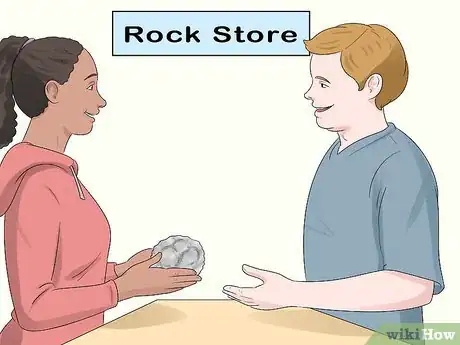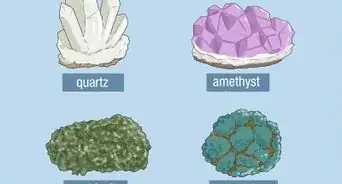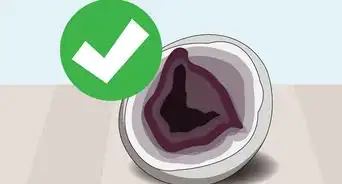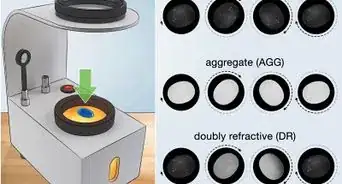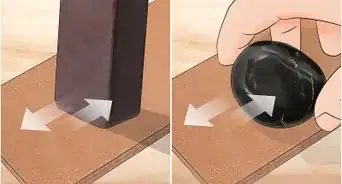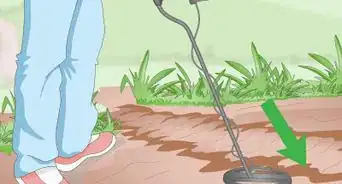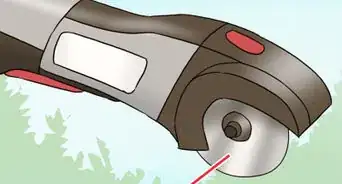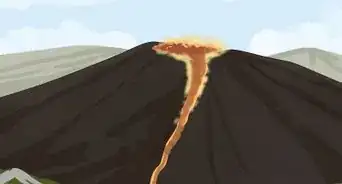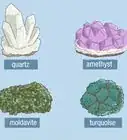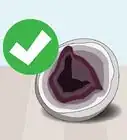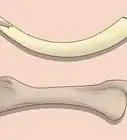This article was co-authored by Sam Lagor, MSc. Sam Lagor is a Geologist with over eight years of experience. He specializes in engineering geology (dams, bridges, and tunnels) and mineral exploration (gold, lead/zinc, andindustrial minerals). Sam holds a BS in Geology from St. Lawrence University and an MS in Geology from The University of Vermont. He is also a member of the Geological Society of America and the American Institute of Professional Geologists.
There are 8 references cited in this article, which can be found at the bottom of the page.
wikiHow marks an article as reader-approved once it receives enough positive feedback. This article received 12 testimonials and 80% of readers who voted found it helpful, earning it our reader-approved status.
This article has been viewed 197,036 times.
Geodes may look like unexciting rocks on the surface, but hunting them down is worth it once you split one open to see the magical display that's inside. Whether you're going on a hiking trip or spending a day at the river with your family, geode hunting is an activity for all ages. By researching nearby collecting sites, exploring limestone areas and riverbeds, or calling your state's welcome center for information, you'll be one step closer to cracking open those geodes to see what they have inside.
Things You Should Know
- Find a spot where geodes are naturally found or call your state’s welcome center for rock and mineral sites. You could even go on a trip with a gem and mineral club.
- Identify geodes by finding round or egg-shaped rocks with a bumpy surface texture. Ensure the geode is lighter than other similar-sized rocks.
- Open the geode on-site by wrapping it in a sock and cracking it with a hammer and chisel. You could also use a saw at home, or bring it to a professional.
Steps
Finding a Site
-
1Visit a location where geodes are often found. There are many spots where geodes are more commonly found, such as riverbeds, limestone areas, or volcanic ash beds of deserts. Explore these natural spots for a better chance of finding a geode.[1]
- Limestone is typically found in warm, shallow water areas and is usually a shade of tan or bluish gray. Volcanic ash beds are formed from the eruption of a volcano.
- California, Utah, Nevada, Iowa, and Arizona are all known for their geodes, but you can find geodes in most other states as well.[2] Your rockhounding experience will really depend on what part of the country you're in—for instance, searching for geodes in the northeastern US will be a lot different than looking for geodes in the southwest.[3]
- Uruguay, Brazil, and Mexico are also known for having geodes, and Madagascar has a specific type called the celestite geode.
-
2Call or visit your state's or city's welcome center for information. Your state's welcome center should know of any rock and mineral sites in the area, so call, email, or visit them in person to find out more information. They may even be able to give you helpful maps or guides to help you with your search.[4]Advertisement
-
3Go on a geode field trip with a gem and mineral club. Gem and mineral clubs tend to go on field trips regularly throughout the year to hunt for geodes at different locations. If you join, you can go along on field trips, attend meetings, and meet a bunch of people also interested in gems and minerals.[5]
- There are hundreds of gem and mineral clubs, such as Four Corners Gem and Mineral Club, San Francisco Gem and Mineral Society, and Tucson Gem and Mineral Society.
- Go online to find a gem and mineral club near you. Their website will have all of the information needed to join.
- A lot of rockhounding locations end up being on private property. Double-check that you have the rights to be on that land before you head over.[6]
-
4Take a private geode tour. Many states have designated mineral collecting sites you can visit. At these sites, you are led by a tour guide to the collecting site and can then discover and dig for rocks with their guidance. Go online to find a private geode tour near you.[7]
- Many of these sites cost money and require a bucket and proper clothing — such as boots, gloves, or even goggles — so call ahead or check online to find out the details regarding the specific collecting site.
- You may also need to bring along chisels, sledgehammers, sturdy gloves, and a backpack to carry everything.[8]
Recognizing Geodes
-
1Look for rocks with a bumpy texture. When you're searching, you want to look for lumpy rocks. Geodes have lots of bumps and texture to them, so steer clear of any rocks with a very smooth surface.[9]
- Geodes tend to resemble cauliflower in texture.
-
2Search for rocks that are round or egg-shaped. While they may not be perfectly round, geodes tend to be round or oval-shaped. They shouldn't have any super sharp or angular edges.[10]
-
3Check the rock's weight. Look and see if your rock may be hollow, either by picking up another rock and comparing the weights, or by gently shaking your rock to see if anything (such as crystals) rattles around. Geodes tend to be lighter than most other rocks because their center is sometimes hollow.[11]
- Geodes can range in size from the size of a pea to a basketball, and possibly even larger.
-
4Be prepared to dig a little. While it's definitely possible to find geodes simply sitting on the ground, some of them may be under layers of dirt or other rocks. Be prepared to dig a little to uncover your geodes and don't be disappointed if you don't immediately see them at a designated geode site.[12]
- If you're searching an ash bed, limestone area, or especially a riverbed, use a shovel to lightly scrape the sediment around. The water might have caused sediment to cover the geodes or they could be hidden under the ash.
- If you're at a geode collecting site or on a field trip with a gem and mineral club, bring a shovel. Your guide may be able to point out spots where you can dig a little to find more geodes.
Opening Your Geode
-
1Use a hammer and chisel to open the geode on site. This is the most popular way of opening a geode due to its ease and convenience. Place your chisel in the middle of the rock and lightly use your hammer to make small indentations around the circumference of the rock. Keep chiseling in a circle around the rock until you see a crack form, and then follow the crack with your chisel and hammer until it cracks open.[13]
-
2Put your geode in a sock before hammering it to avoid a mess. If you have a small geode and don't care about a clean break, put the geode in a sock and hammer away at it. This method is great for kids and keeps the geode pieces from flying everywhere.[14]
-
3Use a heavier rock to open your geode on site. If you don't have any tools, you can use another rock to open your geode. Smash your geode with a heavier rock, being careful not to do it too hard or your geode could splinter into many tiny pieces.[15]
-
4Use a saw or pipe cutter once you've returned home. If you want a very clean cut, you can saw your geode in half with a saw or pipe cutter. These are usually more expensive tools, and you won't be able to use them in the field.[16]
- Pipe cutters have a chain that you can wrap around the geode to keep it in place while you work.
-
5Take your geode to a professional for a clean cut. If you take your geode to a small rock store or similar professional, they'll be able to open your geode with an even cut. Most times they will charge a small fee.[17]
Warnings
- Wear protective eyewear when splitting open your geodes so that small pieces don't fly into your eyes.⧼thumbs_response⧽
Things You'll Need
- Shovel
- Proper attire (boots, pants, gloves, etc)
- Bucket or bag for collecting geodes
- Hammer (optional)
- Chisel (optional)
- Sock (optional)
- Saw or pipe cutter (optional)
References
- ↑ http://geology.com/articles/geodes/
- ↑ https://sciencing.com/geodes-5410702.html
- ↑ Sam Lagor, MSc. Geologist. Expert Interview. 7 October 2021.
- ↑ http://www.gemcoach.com/how-to-hunt-for-geodes/
- ↑ http://vgms.org/
- ↑ Sam Lagor, MSc. Geologist. Expert Interview. 7 October 2021.
- ↑ https://www.smithsonianmag.com/travel/hidden-gems-hunt-treasure-these-geological-sites-180957962/
- ↑ Sam Lagor, MSc. Geologist. Expert Interview. 7 October 2021.
- ↑ http://www.gemcoach.com/how-to-hunt-for-geodes/
- ↑ https://www.homegrownfun.com/what-is-a-geode-and-how-do-you-hunt-for-geodes/
- ↑ http://www.gemcoach.com/how-to-hunt-for-geodes/
- ↑ https://www.homegrownfun.com/what-is-a-geode-and-how-do-you-hunt-for-geodes/
- ↑ https://www.geodegallery.com/breakinggeodes.html
- ↑ https://www.geodegallery.com/breakinggeodes.html
- ↑ http://www.gemcoach.com/how-to-hunt-for-geodes/
- ↑ http://www.gemcoach.com/how-to-hunt-for-geodes/
- ↑ http://www.gemcoach.com/how-to-hunt-for-geodes/
About This Article
To find geodes, look in riverbeds, limestone areas, and volcanic ash beds in countries where geodes are often found, like the United States, Mexico, Brazil, and Madagascar. When you're searching for geodes, look for rocks that are round or egg-shaped with a bumpy texture. If you think a rock might be a geode, pick it up and see if it feels hollow, which is a sign that it could be a geode. You can also bust open the rock with a hammer and chisel to see if there's a geode inside. To learn how to dig for geodes, scroll down!
